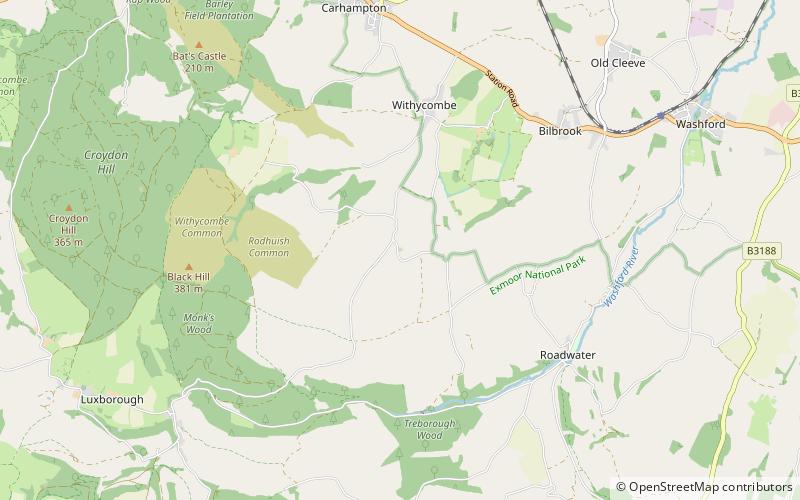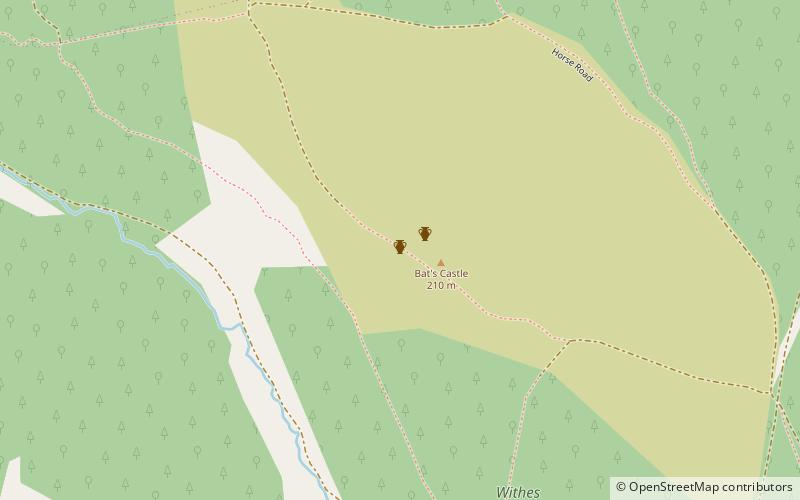Church of St Bartholomew, Exmoor National Park
#32 among attractions in Exmoor National Park


Facts and practical information
The Anglican Church of St Bartholomew in Rodhuish, Somerset, England was built in the 15th century. It is a Grade II* listed building. ()
Exmoor National Park United Kingdom
Church of St Bartholomew – popular in the area (distance from the attraction)
Nearby attractions include: Dunster Castle, Luttrell Arms, Cleeve Abbey, Dunster Working Watermill.
 Historical place, Forts and castles, Vernacular architecture
Historical place, Forts and castles, Vernacular architectureDunster Castle, Dunster
70 min walk • Dunster Castle is a former motte and bailey castle, now a country house, in the village of Dunster, Somerset, England. The castle lies on the top of a steep hill called the Tor, and has been fortified since the late Anglo-Saxon period.
 Nightlife
NightlifeLuttrell Arms, Dunster
75 min walk • The Luttrell Arms in Dunster, Somerset, England was built in the late 15th century and is located in the centre of the medieval town of Dunster. The building has been designated as a Grade II* listed building since 22 May 1969. The original building has been enlarged over the years by addition of further wings. It is now used as a hotel.
 Monastery, Historical place, Sacred and religious sites
Monastery, Historical place, Sacred and religious sitesCleeve Abbey
58 min walk • Cleeve Abbey is a medieval monastery located near the village of Washford, in Somerset, England. It is a Grade I listed building and has been scheduled as an ancient monument.
 Museum, Watermill
Museum, WatermillDunster Working Watermill, Dunster
72 min walk • Dunster Working Watermill is a restored 18th century watermill, situated on the River Avill, close to Gallox Bridge, in the grounds of Dunster Castle in Dunster, Somerset, England. It is a Grade II* listed building.
 Bridge
BridgeGallox Bridge, Dunster
67 min walk • The Gallox Bridge in Dunster, Somerset, England dates from the 15th century. It has been designated as a Grade I listed building and scheduled monument. The bridge is in the guardianship of English Heritage.
 Church
ChurchPriory Church of St George, Dunster
73 min walk • The Priory Church of St George in Dunster, Somerset, England, is predominantly 15th-century with evidence of 12th- and 13th-century work. It has been designated as a Grade I listed building.
 Park
ParkNettlecombe Court, Exmoor National Park
76 min walk • Nettlecombe Court and park is an old estate on the northern fringes of the Brendon Hills, within the Exmoor National Park. They are within the civil parish of Nettlecombe, named after the house, and are approximately 3.6 miles from the village of Williton, in the English county of Somerset.
 Architecture, Memorial
Architecture, MemorialYarn Market, Dunster
75 min walk • The Yarn Market in Dunster, Somerset, England was built in the early 17th century. It has been designated as a Grade I listed building and scheduled monument. Dunster was an important market place in the Middle Ages particularly following the construction of Dunster Castle and the establishment of the Priory Church of St George.
 Forts and castles
Forts and castlesBat's Castle, Exmoor National Park
56 min walk • Bats Castle is an Iron Age hill fort at the top of a 213 metres high hill in the parish of Carhampton south south west of Dunster in Somerset, England. The site was identified in 1983 after some schoolboys found eight silver-plated coins dating from 102BC to AD350. It is on the highest point of Gallox Hill.
 Zoo
ZooTropiquaria
76 min walk • Tropiquaria Zoo is a small tropical house and zoo in West Somerset, England. It is located 16 miles from Taunton and 9 miles from Minehead. It is based in a 1930s art deco BBC radio transmitter hall of Washford transmitting station, which is now a Grade II listed building. A zoo has been run from this site since the early 1990s.
 Architecture
ArchitectureDunster Dovecote, Dunster
74 min walk • The Dovecote in Dunster, Somerset, England was probably built in the late 16th century. It has been designated as a Grade II* listed building and Scheduled Ancient Monument.
